The purpose of a car’s design is to take something that will essentially exist to consumers as an appliance and elevate it into something that they can project an identity onto, and therefore justify blowing 10-to-100 grand to acquire. The grand project of drawing the most fuckable windowed toaster has brought many evolutions, and just as evolution keeps making crabs, car designers keep going, “Yo, what if they could climb on it?” What follows is a history of their attempts to help us goofy car owners clamber up our vehicles, and the reasons we have had to.
Why Climb? Poop Is Gross!
The original vehicular foothold came from a very practical place: not getting horseshit kicked up on you. Back in the days of the horse and buggy, roads weren’t paved and were pretty foul. Horses famously relieve themselves wherever they happen to be, and their hooves tear up the topsoil as well, creating an awful morass of shit, piss, and mud. People also would have, in some places, dumped their chamber pots in the street. Carriages were designed quite high off the ground so as not to catch all of the nastiness of the road, with steps or running boards on the side to aid entry.
When horseless carriages were invented, the refined gentleperson would purchase a motor chassis from a motor company, then take that to a coach builder who would essentially build from scratch the cabin that would sit atop the chassis, pushing the passengers even higher than drawn coaches.
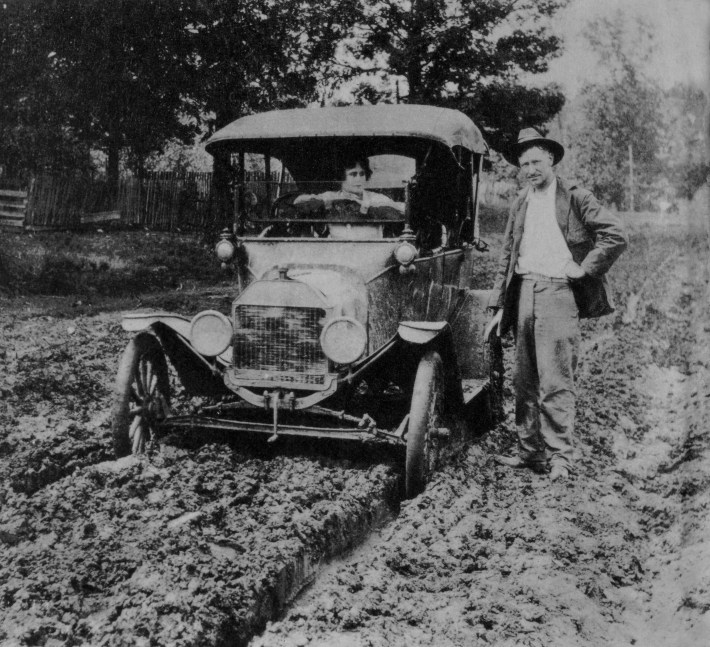
As time wore on, humans got a lot better at building roads. Some guy figured out that you could sell cars a lot cheaper, to many more people, if you made the whole car the same way, over and over, under one roof (I forget his name). With all these developments, the passenger cabin fell earthward. It became easier and easier to climb aboard until…
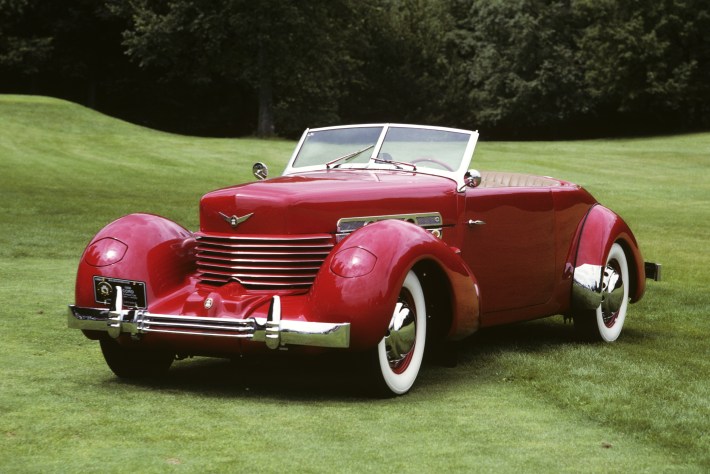
The 1936 Cord (with a C) was a revolutionary design, way ahead of its time— both in history and in the fact that they didn’t quite ship them as finished as they ought to have. It was the first production car to have front wheel drive with independent front suspension, so if this thing hadn’t been broken all the time, it would have likely been the best-handling production car on Earth. It was also the first car with pop-up headlights, and the first to have no running boards. Cord hardly delivered any of these, and the ones that they did weren’t great vehicles, but people went bananas for this design when it came out. Detroit’s big three paid attention, too. By 1941, the Ford (with an F) sedan featured almost no running board at all.
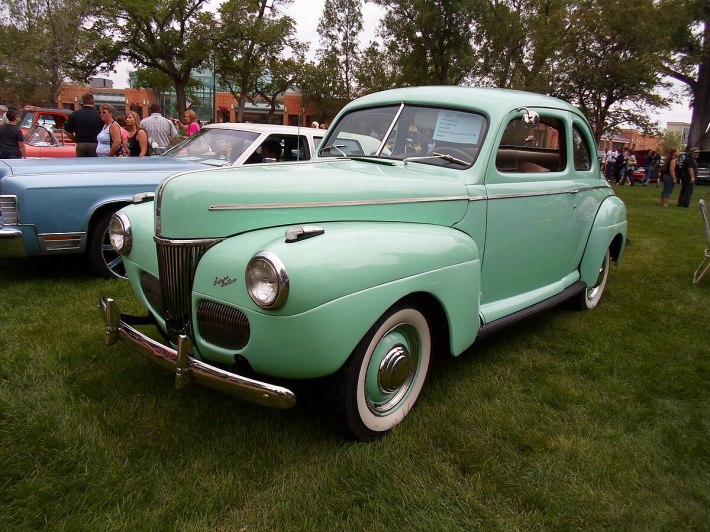
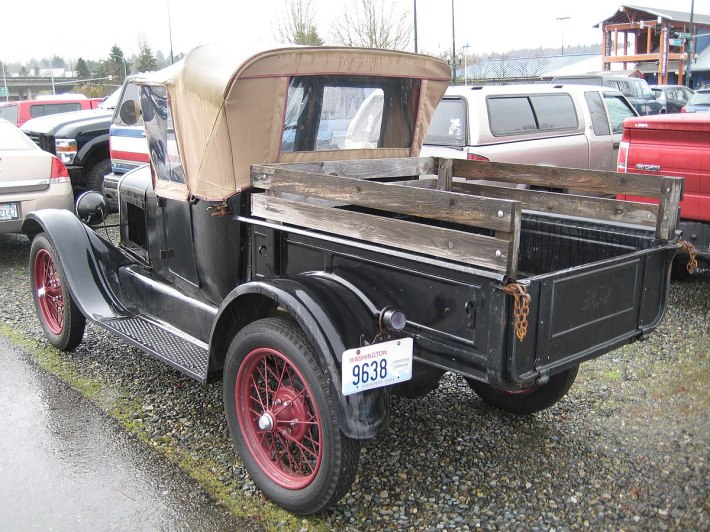
(John Lloyd from Concrete, Washington, United States, CC BY 2.0 via Wikimedia Commons)
While the car had been lowered and streamlined for asphalt, pickup trucks were still trundling through pig shit on farms. The advent of the work truck had come shortly after Ford introduced cars that working people could afford, with the pickup bed being an addition made as cheaply as possible so that farmers and tradesmen could afford them. The cheapest way to stick a box on the back of a car was to stick a literal box on the back of a literal car. Automakers had their sleek sedans but kept the earlier, higher-up car designs around in their pickup offerings, still featuring fender-to-fender running boards.
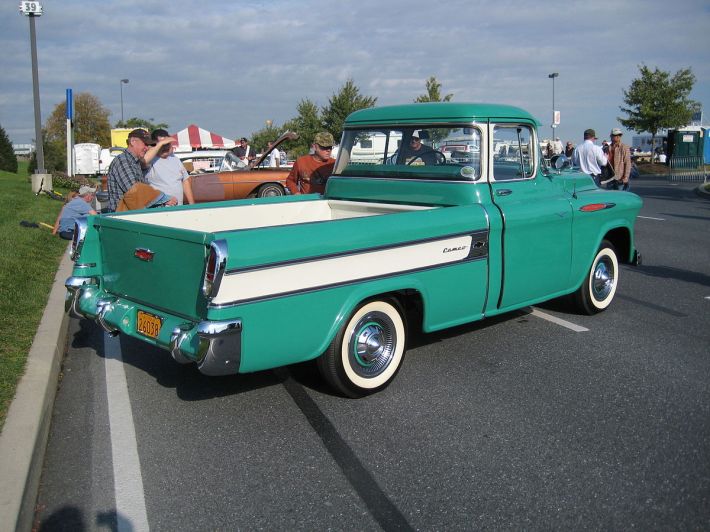
(John Lloyd from Concrete, Washington, United States, CC BY 2.0, via Wikimedia Commons)
Let’s spare a thought for Chuck Jordan, the unfortunate motherfucker who designed the Chevy Cameo Carrier that released in 1955. Wow, really sleek! No running boards! The rear fender is flush with the cab! The step up into the cab is inside the cab, though because truck buyers might have appreciated the running board for reaching cargo in the bed, Chevy offered a “stepside” bed design as standard.
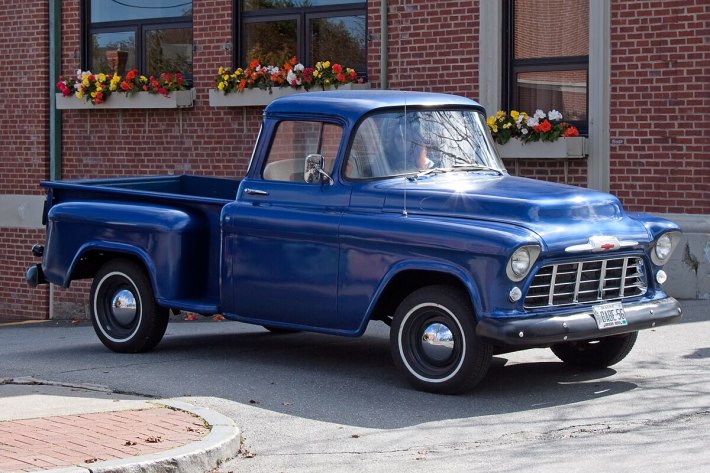
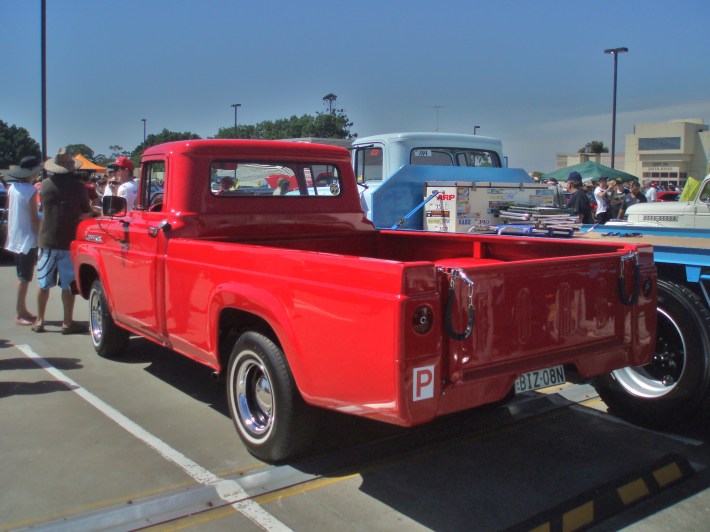
In 1957 Ford released the new third-gen F-Series with a “Styleside” option. At a glance, it looks like a knockoff of Jordan’s design, just as Dodge had done the prior year. However, the footprint of the wheelwell inside the fender is reduced as much as possible, with all remaining space used to increase the size of the pickup bed. This was how the practicality of the stepside pickup would die: not killed by sleek design, but by the superior practicality of literally just more area to put shit, in a segment of vehicles defined by area to put shit. They also offered the stepside bed standard, but the “Styleside” was so popular that the next, fourth-generation F-Series trucks did not even have a stepside option. The stepside style would cameo intermittently thereafter, but never came standard again.
A Dark Age For Climbable Vehicles Delivers the Quintessential Climbed Vehicle
Okay so, the stepside is mostly dead, as are running boards. Where might one climb, if not the side?
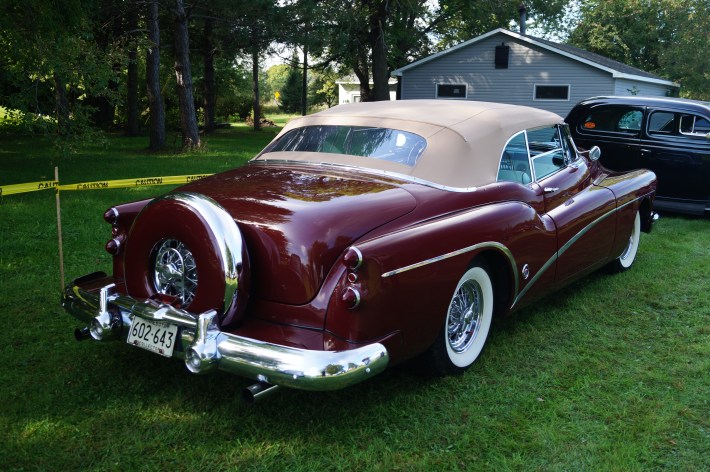
This deep rear bumper/spare tire mount is known as a continental kit, so called for its introduction on the Lincoln Continental. In the time before compact spare tires, luxury cars could use these to free up the rear cargo fiefdom to hold untold thousands of golf clubs. Obviously, this is more style than substance, and for the most part would stay in the ’50s or designs attempting to evoke the ’50s. There was one notable exception: a car that would be burned into the collective consciousness in the ’60s.
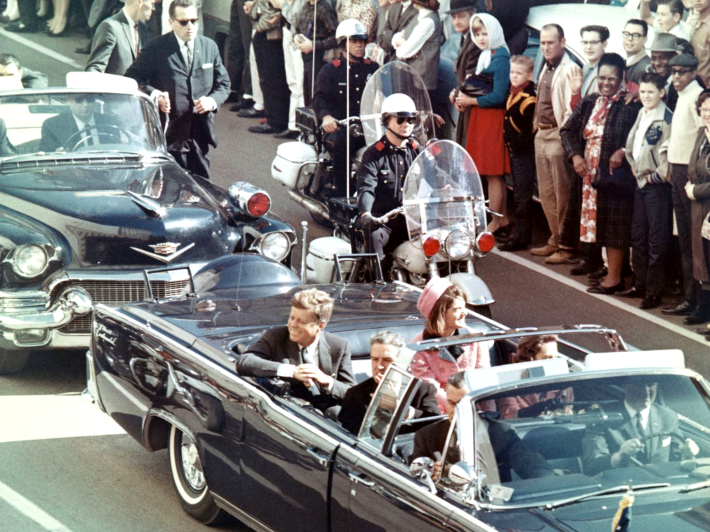
The only car ever to contain a freshly smoked president. No car has been climbed on like this one. Secret Service climbed on it. Jackie Kennedy crawled all over it. Lyndon Johnson ascended by way of its absent roof. It was all made possible by a continental kit, which held the spare tire so that the very large limousine roof could be stowed in the trunk. The deep continental bumper had steps set in so that the Secret Service could comfortably hang off the back with those sweet custom handles.
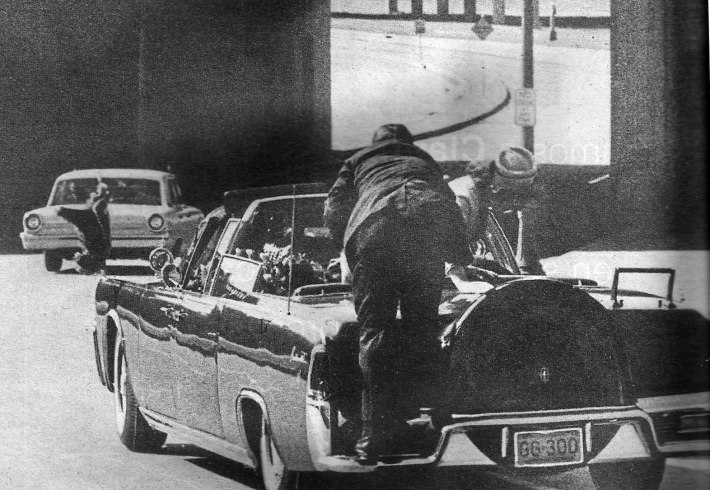
This car also featured little retractable steps around the sides, so that it could hold many dudes.
The Road To Hell Is Paved By Israel’s Intentions
Back in Act 1, you may have found yourself thinking something like, “Those stage coaches don’t look so crazy high off the ground.” Well, listen up dude: I knew you were thinking that the whole time. You have been infected with SUV brainworms, and your behavior is predictable. It is crazy high off the ground, especially if the road is not 30 percent excrement by volume. Coincidentally, the road to the SUV takeover is pure packed shit; it is zero fun at all.
As the saying goes in automotive writing, there is no complete history that skips the 1973 Arab oil embargo. In 1967, just five months after Vince Lombardi’s Packers won the first Super Bowl, Israel executed a massive surprise attack and caught Egypt, Jordan, and Syria with their collective trousers down, grabbing 27,000 miles of territory. Israel claims that it was not an unprovoked land grab, and that they knew of an impending attack from Egypt, though this claim has been contradicted by many, including a sitting prime minister of Israel.
On Yom Kippur, 1973, a coalition of Arab states launched their own surprise attack to reclaim the lost territory. Near the conclusion of this conflict, Israel asked America for some weapons, and Richard Nixon decided to send more than twice as much as they asked for. The king of Saudi Arabia considered this to be a real dick move, and he responded by stopping oil exports to all countries that supported Israel during the Yom Kippur war—soon to be joined in this embargo by the other Arab States. This worked really well. Yanks were generally too uncurious and insulated to grapple with the cause for their gas being rationed, but they sure didn’t care for being beholden to the whims of foreigners. The oil embargo ended in ’74. One year later, Congress implemented Corporate Average Fuel Economy (CAFE) standards as part of a strategy for maintaining energy independence.
CAFE was intended to force American automakers to get off their asses and invest in the development of more efficient motors in order to prevent future oil shortages. Detroit instead detuned their old engines so as to make considerably less power and cancelled all their sports offerings. Car buyers did like me when I noticed dad made hot dogs for dinner every night in a week and saved him the trouble by going to a friend’s house. Import sales skyrocketed.
Cars Get Bad
While CAFE had successfully closed the door on Detroit’s worst excesses, it had left a window open. CAFE had created two categories for regulated vehicles: cars and trucks. Cars had stringent fuel economy restrictions, but trucks didn’t. After all, trucks had to haul stuff, tow stuff, all that good farmer and tradesman shit. Having a giant family station wagon in your car fleet meant it had to be offset by other, more efficient cars. But what if you could just reclassify that station wagon into the truck segment? You’d need some sort of very small van, big enough to handle Catholic birth control practices yet small enough to handle parking at crowded soccer practices.

With CAFE standards, the truck/SUV segment is more profitable, because you can use bigger, less intricately engineered, less fuel-efficient engines. It’s also more profitable because, while the extra cabin space isn’t really pricey to produce, it can be marked up just as aggressively as, say, a better engine could. The only issue with the Chrysler minivan above is that the minivan market is basically limited to people that have kids. There’s no way to talk single people or childless couples into buying them, because why the hell do they need something with so much space for passengers? Automakers figured out the answer to this question, too. It just took a little longer.
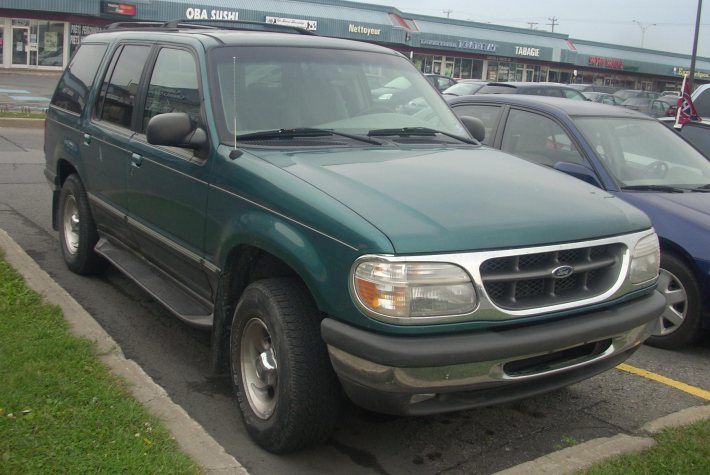
While the Grand Caravan was the car of the ’80s, the car of the ’90s would be the Ford Explorer. Everyone and my mom had one of these. The second generation was released in ’95, and look! Running boards are back! This would be exciting if I didn’t know what comes next. The second generation Explorer would change cars forever, in a truly awful way. It was the right car at the right time for the insane fearful suburbs of the late ’90s. It was high off the ground, well insulated, and added dual airbags—a first for American SUVs. It wasn’t good, really: It sucked on gas, it wasn’t all that comfortable, it handled like a truck, and it looked like one too. But at that moment none of its problems really mattered. The people that needed to be sensible with their money were, and would be forever after, shopping on the used car market. Their opinions did not matter.
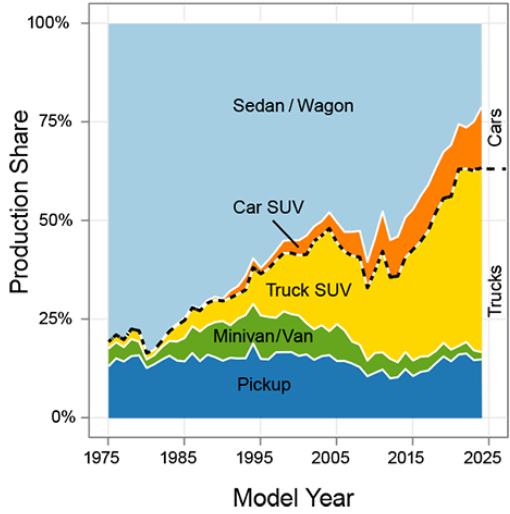
The “Truck SUV” segment shown here is anything with a 4WD transfer case (not including AWD vehicles) or exceeding a gross vehicle weight of three metric tons. What does 6,000 lbs look like? My dad left me a 2012 Toyota Tundra, a full size pickup, with a gross weight of 6,200 lbs. It was gargantuan. Nobody should own that unless they run a yacht relocation service. Why did people buy so many of these things?
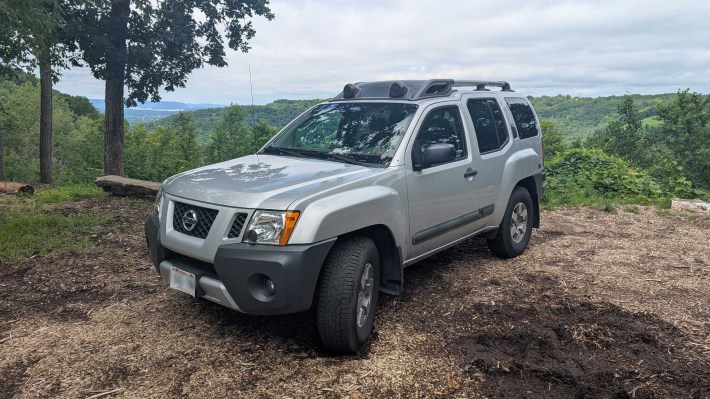
The second generation Nissan Xterra seen above is owned by a couple with no children: my aunt and uncle. They basically justify it. They’re retired, travel a ton, and get way off of paved roads. It has many nice features for that sort of lifestyle, including:
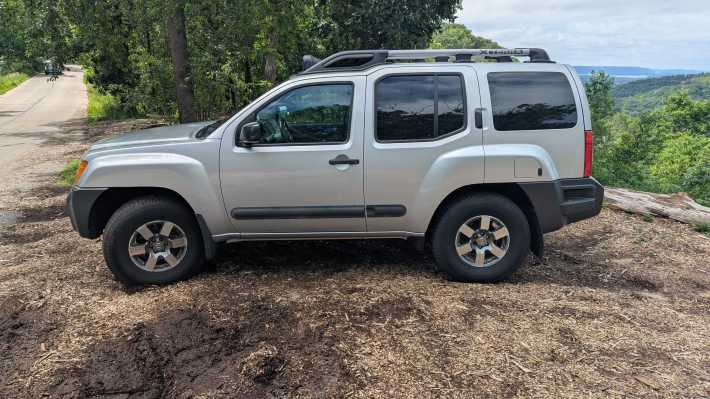
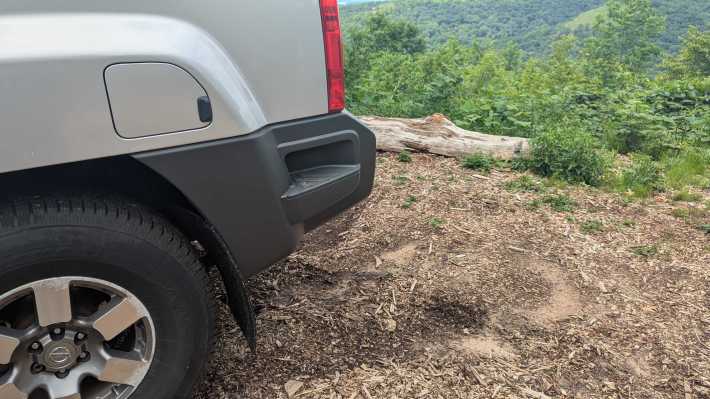
Aw hell yeah! If you need to strap stuff to the top of a truck with this kind of suspension travel, I imagine this would be a big help. They even built in that nice big rack for holding all the stuff you’re strapping up top, with a wind guard to make the whole project more aerodynamic.
One would think that for a segment theoretically defined by its rugged practicality, new SUVs would all be doing cool stuff like this. But this vehicle would be discontinued in 2015, replaced in segment by the Pathfinder. The 2016 Pathfinder has roof rails but no rack, no step, and not even a step bumper. Plus, four-wheel drive is an option, but the default is front-wheel drive, despite the car literally being called the Pathfinder. Off-road features cost money to add, but SUV buyers do not actually go off-road for the most part, so they won’t really notice the difference if a manufacturer just implies the premium-priced ruggedness without actually providing any.
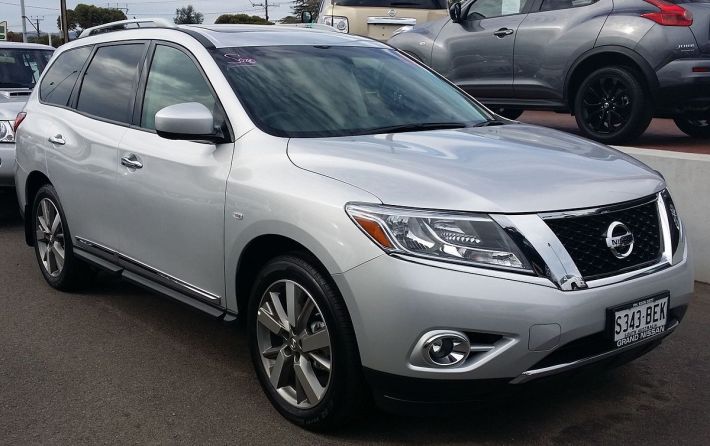
Cars Get Much Worse
Car dorks like me often talk about the time before 2015 as a sort of prelapsarian period. It sucked back then too, but notably less so. In 2014 the National Highway Traffic Safety Administration announced that every new vehicle would be mandated to have a backup camera by 2018. In a vacuum, this is a good change that would save lives. In practice, it accelerated the aging curve of cars significantly. Every generational refresh after this would add a giant screen in the center console, where you would have not just your backup camera but also digital climate control, maps, and everything else. Before the big-screen era, a new car was good for its mechanical lifetime. Now, a new vehicle is good until you notice that a touchscreen designed around 2015 is slow and kind of sucks now. But did it slow down deaths?

This is why car dorks like that 2005-2015 era so much. In the mid ’00s, car makers really did figure out how to make cars much safer. But while screens made cars obsolete faster, the bigger safety threat was the SUV. See, 2014-15 was also the time on the earlier chart that “Truck SUVs” exploded out of control. Larger, higher, and heavier vehicles usually have worse visibility and always have much worse handling and stopping distances, meaning they get in way more crashes. More accidents is also a bonus for auto makers: It doesn’t matter who is at fault in an accident, because no matter whose insurance buys the new cars, new cars get bought. By the way, do you know anyone who got in a bad car crash and bought an SUV after for better protection in the future? An SUV is sort of like a gun: It would be better if nobody had them, but if you get into an altercation with someone that does, you may die if you’re caught lackin’.
Anyway, why does everything have running boards again? How have the majority of new-car buyers managed to decide they need a vehicle so obscenely large and off-road capable? Simple! It’s more profitable for automakers, so they decided for us. Some consumers tell you that they are choosing their vehicle because they are afraid of dying in car accidents, because they like to go camping, or because they have kids, but that is all post-hoc justification sold to us by advertising. The only reason consumers want anything the most is because it is the most profitable thing a company thinks it can get you to justify.
Not All Murder Trucks Are the Same; One Has Cool Features
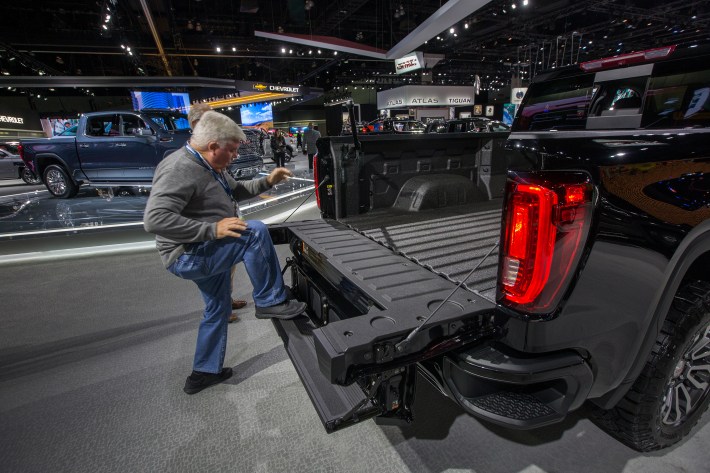
In 2019, GMC introduced the latest generation of their full-sized truck, the Sierra, with a new feature: the MultiPro tailgate. I was skeptical of this silly, Transformers-ass gimmick when I first saw it. Having now put hands (and feet) on it, I can say for certain that it is the goddamn truth and every truck that doesn’t offer it should now be considered casual, office-worker, pavement-princess poser shit. It should be standard, but instead is like a $500 option. (It does come standard with steps on the corners of the rear bumpers, which is something at least.) This Sierra also offers a step on the side—though not a stepside. It doesn’t detract from bed space but instead just hangs out below the fenders like the JFK car. Though nobody has copied the tailgate, it seems other truck companies are now offering similar bumper and not-quite stepside options.
I wish I had gotten all these fun features on the Tundra. Also, I wish I didn’t have the Tundra at all. It nearly killed me in an accident (not my fault) that could have been avoided with better stopping distance.
The Best Vehicle To Climb Onto Is Public Transit. Am I Right, Teens?
The climbablity of a car tells us much about its intended usage. History explains that handholds and footholds do not make for a beautiful appliance, so it says a lot about the buyer who needs them anyway. If form follows function, why do we accept so little of either? When I was a kid, I was so excited about the little step on the back of the Xterra. But since its discontinuation, it just makes me sort of depressed. I see running boards on so many bland SUVs, and while they are necessary to use those vehicles, the use of those vehicles isn’t necessary.
For those that need a work truck, the Sierra really is nice and can be had in a single cab with a long bed (as god intended) for like 40k. For those who want an off-roader, the best option will always be something small and purpose-built, like an old Jeep. Otherwise, please do your fellow humans a favor and just get a circa-2012 Toyota Camry. Sure, it’s not very interesting, but if you were considering an SUV, your taste isn’t very interesting. And that’s fine! Cars are appliances. They shouldn’t need to excite you. You can always stick out your thumb at a truck stop if you want an adventure.